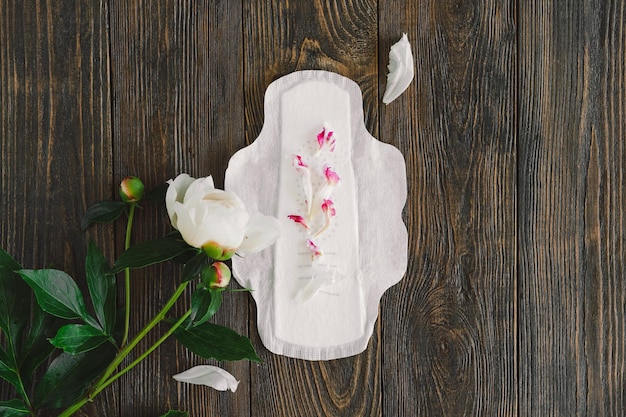Sanitary pads are essential for menstrual hygiene, but the ingredients in many conventional pads raise concerns. Chemicals such as dioxins, chlorine, and synthetic fragrances can lead to skin irritation, allergies, and potential long-term health risks. Given these issues, many women choose chemical free sanitary pads as a healthier and eco-friendly choice. In this article, we’ll explore what separates chemical free pads, their health and environmental advantages, and who may benefit most from making the switch.
Why Choose Chemical Free Sanitary Pads?
Chemical free sanitary pads are crafted with minimal chemical exposure, offering peace of mind and reducing risks associated with conventional products. For women with sensitive skin or allergies, chemical free pads can help prevent rashes, itching, and irritation. Additionally, with a greater focus on health and environmental awareness, these pads offer an eco-friendly solution that reduces the harmful waste typically associated with synthetic sanitary products.
By choosing chemical free options, women can feel confident about using safer, healthier, and more sustainable products during their menstrual cycles.
What Makes a Sanitary Pad ‘Chemical-Free’?
A pad is considered ‘chemical-free’ when manufactured without toxic chemicals, artificial fragrances, or synthetic materials. Instead of chlorine bleaching, many chemical free pads use hydrogen peroxide to whiten the materials, which reduces exposure to harmful dioxins. These pads often incorporate organic cotton and biodegradable materials to ensure they are safer for the body and the environment. Avoiding synthetic ingredients and chemicals makes these pads gentler on sensitive skin, minimize exposure to potential carcinogens, and offer a more natural approach to menstrual care.
Harmful Chemicals in Conventional Pads
Conventional pads often contain a mix of chemicals, many of which may be harmful over prolonged exposure. While not always openly disclosed, these chemicals can include:
Dioxins: A byproduct of the chlorine bleaching process, dioxins are potentially carcinogenic and can accumulate in the body over time.
Chlorine: Often used in bleaching, chlorine can release dioxins and cause skin irritation.
Synthetic Fragrances: These can contain phthalates and other irritants that may disrupt hormonal balance and increase the risk of allergies.
Polyethylene and Polypropylene: Plastics used for absorption can sometimes cause heat buildup, leading to irritation and bacterial growth.
Effects of these chemicals on women’s health:
Exposure to chemicals in conventional long-lasting XXL sanitary pads can have multiple adverse effects on women’s health. The presence of dioxins has been linked to hormonal disruption and even cancer in extreme cases, while synthetic fragrances may lead to allergies, irritation, and endocrine disruption. Additionally, exposure to these chemicals may impact the vaginal pH balance, leading to a higher risk of infections.
For women with preexisting conditions or those particularly sensitive to chemical exposure, these conventional pads can exacerbate health issues, making a case for a safer, chemical-free alternative.
Health Benefits of Using Chemical Free Sanitary Pads
Reduced risk of allergies and skin irritations:
Chemical-free pads are crafted with gentle, natural materials, reducing the risk of skin reactions commonly caused by synthetic ingredients in conventional pads. By removing harsh chemicals and opting for organic cotton, chemical-free pads allow the skin to breathe and decrease the likelihood of rashes, itching, and allergies. This is particularly beneficial for women with sensitive skin or those who experience frequent irritation from traditional products.
Benefits for reproductive health:
Using chemical-free sanitary pads can also contribute to better reproductive health. By avoiding exposure to harmful chemicals, women reduce their risk of hormone disruption and related health concerns. Furthermore, chemical free pads are typically more breathable and hypoallergenic, which helps maintain a healthy vaginal environment and lowers the risk of infections.
Environmental Impact of Chemical Free Sanitary Pads
The issue of waste with traditional sanitary products:
Conventional sanitary pads are often made with plastics, chemicals, and synthetic fibers, making them slow to decompose. Each pad can take hundreds of years to break down, adding to the global waste crisis. Many conventional pads also come with plastic packaging, which adds to their environmental impact. This waste accumulates in landfills, pollutes oceans, and can harm wildlife, making it essential to consider eco-friendly alternatives.
Eco-friendly benefits of chemical-free options:
Chemical-free pads are often made from biodegradable materials such as organic cotton, bamboo fibers, and compostable polymers. Many brands also package their products in recyclable or compostable materials. By choosing chemical-free options, consumers can help reduce the plastic waste generated by traditional sanitary products and contribute to a cleaner, greener planet.
Types of Chemical Free Sanitary Pads
Organic cotton pads:
Organic cotton pads are made from cotton grown without synthetic pesticides or fertilizers. They are free from harsh chemicals, hypoallergenic, and gentle on the skin, making them ideal for people with sensitive skin. They offer a comfortable and breathable option that can help reduce irritation and promote a healthier experience.
Biodegradable and compostable pads:
Biodegradable pads are made from materials that can break down naturally in the environment. These pads typically incorporate plant-based or compostable materials, offering an eco-friendly alternative to synthetic, plastic-filled products. Compostable pads go further by decomposing completely within a compost system, making them an excellent choice for eco-conscious consumers.
Comparing Chemical Free Pads with Conventional Pads
Comfort and absorbency differences:
Many chemical-free pads are designed with comfort in mind, using soft, breathable materials like organic cotton. Conventional pads, however, often rely on synthetic fibers for absorbency, which can trap heat and moisture. While absorbency levels vary among brands, most chemical free pads provide comparable absorbency to conventional ones, making them a suitable choice without sacrificing comfort or performance.
Health and environmental advantages:
Switching to chemical-free pads reduces exposure to toxins and promotes better reproductive health. Environmentally, chemical free pads offer a sustainable option that helps minimize the impact of landfills and pollution. For those prioritizing health and sustainability, chemical-free options offer clear advantages over traditional products, providing a healthier choice for women and the planet.
Who Can Benefit the Most from Chemical Free Sanitary Pads?
People with sensitive skin:
Chemical-free sanitary pads are ideal for people with sensitive skin, as they are less likely to cause irritation, rashes, or allergic reactions. Their natural, gentle materials also make them a safe option for women who experience discomfort with conventional products.
Women concerned about reproductive health:
For those who prioritize their reproductive health, chemical free pads offer a safer choice by reducing exposure to potentially harmful chemicals. They help maintain a balanced vaginal environment, supporting overall health and wellness.
Are Chemical Free Pads More Expensive?
Chemical-free sanitary pads can sometimes cost more than conventional options due to the higher-quality materials. However, many women find the added investment worthwhile for the health and environmental benefits. Similar to the trend observed in natural plant-based adult diapers for incontinence, designed with health and comfort as top priorities, the slightly higher cost of chemical-free pads reflects the commitment to safety and sustainability.
Conclusion
Switching to chemical free sanitary pads benefits personal health, reproductive wellness, and the environment. By reducing exposure to harmful chemicals, these pads provide a safer alternative for women, particularly those with sensitive skin or concerns about hormone disruption. Additionally, the eco-friendly materials used in chemical-free pads help lessen the environmental impact of conventional sanitary products.

